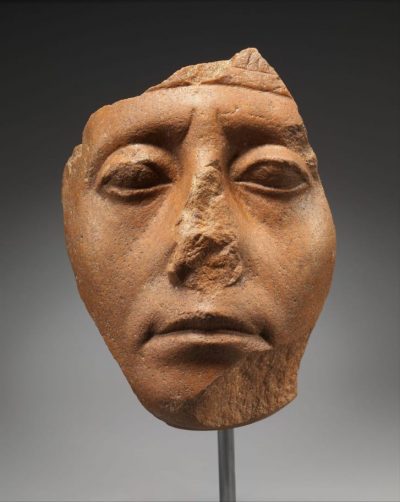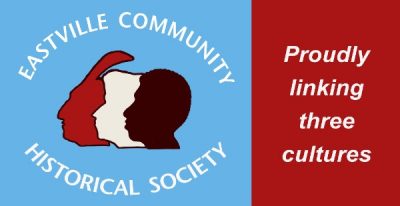
On March 2, 2020, the Paul Mellon Lecture program “Reimagining the Role of Monuments in a Changing World” was presented by World Monuments Fund and the Museum of the City of New York. I was in Albany then for Parks Advocacy Day (which will the subject of a future blog) and was unable to attend this program. Monuments plus memorials and history markers are an important part of our cultural legacy and they have been the subject of previous blogs. Even though I missed this program, I would like to use this opportunity to address some concerns on this subject.
Do we have a database of the current monuments?
Do we know which monuments need repair?
Do we know which monuments need to be replaced?
Do we know which new monuments are needed?
Whose job is it to know the answers to these questions?
The description of the session is:
In recent years, the dialogue around monuments has seized headlines and provoked debate. But monuments have been created for thousands of years, each with unique intents, values, and challenges of its own. They are represented by great architectural treasures like the temples of Angkor, culturally-relevant heritage sites like the homes of Civil Rights leaders in Alabama, and powerful commemorative works like the National Memorial for Peace and Justice. What they share in common is the ability to move us—inspire us, anger us, or motivate us to question their deeper purpose and function in society. World Monuments Fund and the Museum of the City of New York invite you to an evening of conversation that aims to reframe the “monument” in contemporary society and explore the role communities play in decision-making about past and future sites.
Individual abstracts for the speakers were not provided so I will simply list them.
Vinnie Bagwell, whom I know, who created “The First Lady of Jazz Ella Fitzgerald,” at Yonkers Metro-North/Amtrak train station, which I have seen, is creating the “Enslaved Africans’ Rain Garden,” an urban-heritage, public-art project for Yonkers; a seven-foot Sojourner Truth for the Walkway Over the Hudson in Poughkeepsie; and the $1M “Victory Beyond Sims” for Central Park. I briefly wrote about her in Slavery in New York: An Angolan Case Study.
Mark Jarzombek is Professor of the History and Theory of Architecture at MIT.
Jenny Moore has served as Executive Director of The Chinati Foundation since 2012.
Erica Avrami, PhD (moderator) is the James Marston Fitch Assistant Professor of Historic Preservation at Columbia University’s Graduate School of Architecture, Planning, and Preservation.
I cannot comment on what was said. It did call to mind a session I attended in New York that was focused on New York City itself.
Who Decides? The History and Future of Monument Creation in New York City
Oct. 9, 2018, CUNY
New monuments are coming to NYC. But how will they be selected? The city established a Monuments Commission last fall and announced a $10 million pledge for statues or public art honoring neglected groups, and the same amount for monuments recognizing women. In this panel, historians, art historians, and monument advocates will discuss the history of monument creation, visions for new projects, and the current pressures on city agencies to respond to public opinion.
- Michele Bogart, Professor of Art History, Stony Brook University and author of the new Sculpture in Gotham: Art and Urban Renewal In New York City
- Mary Anne Trasciatti, Professor of Writing Studies and Rhetoric, Hofstra University and President, Remember the “Triangle Fire Coalition”
- Jack Tchen, Professor of Public History and the Humanities, Rutgers University and member of the NYC Mayor’s Commission on Monuments
- Moderator: Todd Fine, History Doctoral Candidate, CUNY Graduate Center, President, Washington Street Historical Society, advocate of the monument for “Little Syria”
Unfortunately I can’t find my notes from this conference otherwise this blog would be a lot longer. I do recall that I arrived late and that the room was packed.
The Triangle Shirtwaist Factory fire, one of the topics, was a subject in my blog from August 5, 2014, Unexpected Deaths and Historical Memory, part of series on how we historically handle death.
A more famous New York City tragedy is the Triangle Shirtwaist Factory on March 25, 1911, where 146 people died. A similar and larger tragedy in Bangladesh serves as a reminder that the unsafe conditions faced by these workers have not vanished from the earth. In anticipation of the centennial in 2011, the Remember the Triangle Fire Coalition was formed which includes dozens upon dozens of organizations. According to its mission statement, “it is spearheading the building of a public art memorial to honor the legacy of the Triangle factory workers.” This means there is no such memorial at present. The story of the death of these garment workers is sometimes told as part of the school curriculum. At present there is a memorial display of quilts of the Triangle Fire and Bangladesh incidents at the Cathedral Church of Saint John the Divine near Columbia University.
I was impressed that since then the Triangle Fire Coalition was able to gain direct funding from the Governor in support of a memorial (sometimes the line between monuments and memorials blurs). According to a press release Dec. 22, 2015:
Governor Cuomo Announces New York State Will Contribute $1.5 Million to Help Erect a Memorial to the Victims of the 1911 Triangle Shirtwaist Factory Fire
The memorial will be affixed to the Greenwich Village building where the fire occurred, just off Washington Square Park and now used by New York University, to house biology and chemistry laboratories. The memorial is being built by the Remember the Triangle Fire Coalition. Following a design competition, in 2013 the Coalition selected architectural designer Richard Joon Yoo and Cooper Union architecture professor Uri Wegman, to design the memorial. It will feature steel panels that wrap around the building, at the corner of Greene Street and Washington Place. An upper panel will be engraved with the names of the victims [bold added] facing down to the lower panel, which will reflect the names for people to read. The lower panel will also tell the story of the fire. Along the corner of the building, a reflective steel beam will stretch from the level of the upper panel to the eighth floor, where the fire began.
By coincidence, tonight, March 5, 2020, the Greenwich Village Society for Historic Preservation is sponsoring a program on the status of the memorial.
There once was a time when the New York City Mayor’s Commission on Monuments was all the rage. One could create a cottage industry simply on trying to keep up with all the bloviating especially about Columbus. The battle over the Columbus legacy rages on and has been the subject of a series of blogs. In addition, the Mayor’s desire to fast-track many new monuments has led to erupting tensions off the Richter scale as people have been galvanized not by the injustices of omissions and commissions in the past but by the apparent generation of new ones.
One controversy involves monuments to women’s suffrage set to coincide with women gaining the right to vote in New York in 1917 and then the nation in 2020. A separate blog if not graduate school seminar paper could be written about the ins and outs of the people to be included in the monument…to say nothing of their physical relationships to be frozen in time in the monument. There is an ongoing discussion/debate/fighting on the racial component of the suffrage monument and therefore who should be included in a monument. Do you include Sojourner Truth with the white suffragists but then what about the racism in the suffrage movement?
By coincidence, in three days, March 8, 2020, there will be a sold-out presentation at the New School, New York City by Sally Roesch Wagner and Gloria Steinem on their new book The Women’s Suffrage Movement. Decisions about erecting new monuments are not that easy.
Even decisions about replacing monuments are not that easy. I return now to Vinny Bagwell, a presenter in the first program mentioned in this blog. She is listed in the program as the Million Dollar award winner to replace the statue of Dr. J. Marion Sims. That part was not controversial. What was controversial was the rancorous reaction in the decision-making process before Bagwell finally was selected. That hullabaloo might not be worth a graduate school seminar paper but certainly a long blog could be devoted to it.
And let us not overlook the overlooked Mother Cabrini. Her supporters were out in force when the half-Italian Mayor did not include her in the new monuments to be fast-tracked. In the book and the movie The Last Hurrah, Mayor Skeffington tells the story of his political decision when competing Italian groups were battling to have a statute erected in Irish Boston. The Mayor informs his nephew that he will publically announce his compromise after the election. His choice: Mother Cabrini! As Skeffington says:
“Italian born and the first American saint. Let’s see them get out of that. The first man, woman, child, or monsignor who objects will be stoned out of town. That’s what I mean by compromise.”
So the next time you waxing holier than though about the removal of the Confederate monuments, take a deep breath and remember the monumental battles being fought in the north to this very day. Monuments pose a challenge because history is messy and politics is brutal. And remember the question Brooklyn Museum Egyptologist Ed Bleiberg is asked most frequently:
Why are the noses broken on Egyptian statues?






